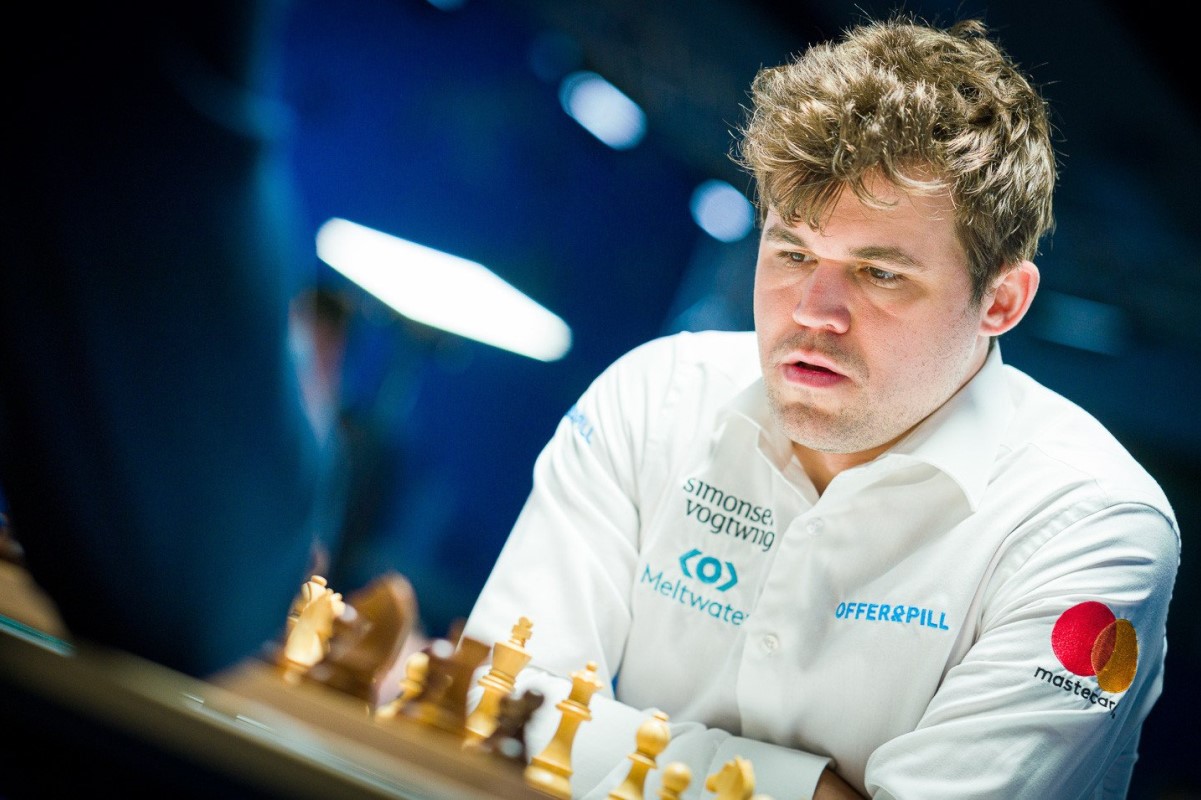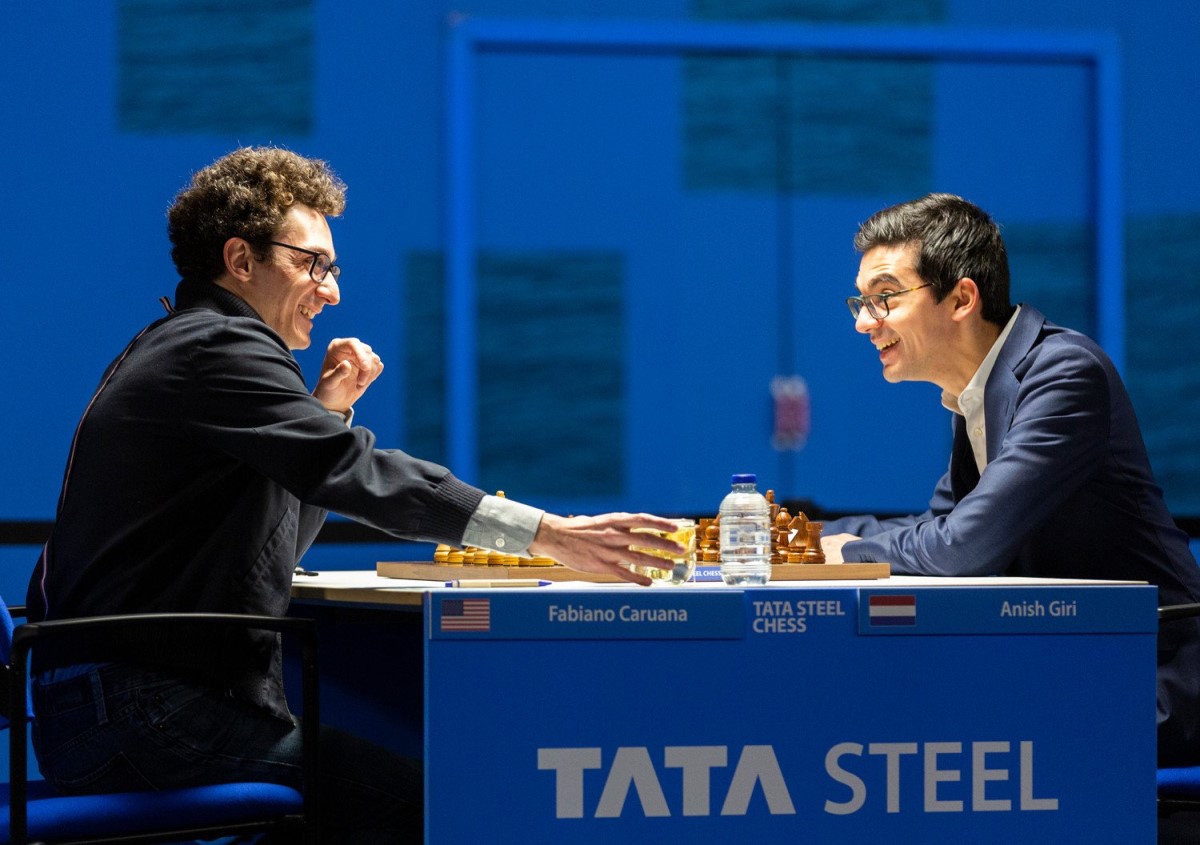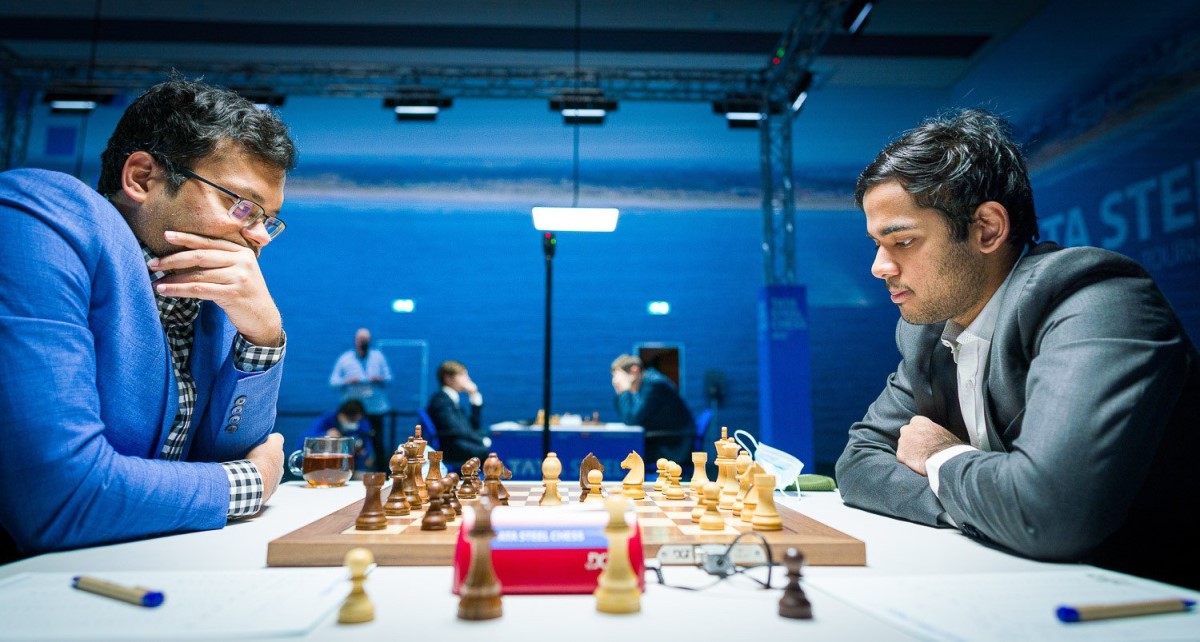


Back in 2009, a 19-year-old Sergey Karjakin — still representing Ukraine at the time — obtained a stunning victory at the A group of the Corus Tournament in Wijk aan Zee. Thirteen years later, after missing three editions in a row, Karjakin has returned to the Ducth coastal town, and with a win over Jorden van Foreest on Friday has bounced back to a fifty-percent score in the Tata Steel Masters.
Also in 2009, Anish Giri, aged 14 and still a FIDE Master, made his debut at the C group of the Corus Tournament. The Dutch star won the B tournament the very next year. Starting in 2011, Giri participated in every single edition of the event — naturally, in the main group. The Dutchman twice shared first place in the A section, but both times he failed to take home the title in the playoffs. Now, thanks to his win over Fabiano Caruana, he stands a full point behind the leaders with seven rounds to go.
Magnus Carlsen made his debut in Wijk all the way back in 2004, at just 13 years of age. His record in the tournament is simply the best in history, as he holds the record for more wins in the main group. The world champion defeated Richard Rapport in round 6, and is now sharing the lead with Vidit Gujrathi and Shakhriyar Mamedyarov.

Fabiano Caruana and Anish Giri before their game | Photo: Jurriaan Hoefsmit
A second win in six games prompted Carlsen to join the leaders on 4½ points, which grants the Norwegian good chances to get an eighth (!) title in Wijk aan Zee with more than half the tournament still to go. After the win, though, a self-critical Carlsen reminded his interviewer that he comes from playing a couple of subpar games, at least for his standards:
The last couple of games were very complicated, and I was really upset with myself after yesterday, after I missed some chances after the time control. Of course, a lot of things happened before that, but that was really, really sloppy.
Out of a Catalan, both Carlsen and Rapport spent copious amounts of time early in the game, as the Norwegian entered a rare sideline as early as on move 7.
After the rarely seen 7.Be3, Rapport thought for over 16 minutes before responding with 7...Bd6, which was also somewhat surprising for the world champion. Carlsen, in turn, needed almost 25 minutes to decide on 8.Qc1, the novelty of the game.
Remarkably, those were not the last long thinks in the opening phase, as the contenders kept needing to be prudent in order to avoid entering a strategically inferior position. As it usually happens in these positions, even a small mistake can have long-term negative consequences. Carlsen identified Rapport’s 18th move as the critical turning point in the game.
Exchanging the light-squared bishop for the knight with 18...Bxf3 was not called for in this position — the engines give 18...Bd5 as the best alternative. As Carlsen explained, the presence of opposite-coloured bishops on a board full of pieces favours the player with the passed pawn on the flank.
Carlsen was precise in conversion, with his queenside pawn deciding the game in the end.
Rapport resigned in this position. The Hungarian has only drawn once so far in the tournament, and he faces Mamedyarov with the white pieces in Saturday’s seventh round — given how the two players have been playing in Wijk, it is likely that we will see some fireworks in their direct encounter!

Calculating — world champion Magnus Carlsen | Photo: Jurriaan Hoefsmit
Both Karjakin and Giri entered closed or semi-closed positions which required plenty of piece manoeuvring in games that lasted over 50 moves. Giri, playing black against Caruana, saw his American opponent missing a chance to make the most of his kingside activity on move 31.
With Black’s heavy pieces far from the action on the queenside, White’s best alternative here was 31.Ng4, when in many subsequent lines Giri would have needed to give up his dark-squared bishop for the white knight — and it would have been very difficult for him to deal with the white pawn parked on f6.
However, Caruana opted for 31.Bxc8, which was quickly responded by 31...fxe3, getting rid of the dangerous knight. The position was balanced, but Caruana faltered again soon after. The swings in evaluation continued, as Karjakin also failed to make the most of his advantage.
It was the American who made the last mistake, though.
Once again, Caruana misevaluated an exchange sacrifice, as his 40.Rb6 was quickly (and correctly) responded by 40...Nxb6, and Black got a winning advantage.
Giri quickly exchanged the minor pieces, as his passed d-pawn proved to be the decisive factor in the ensuing heavy-piece endgame. Resignation came in the following position.
After losing to Carlsen in the second round, Giri now stands a full point behind the leaders on 3 out of 6. Caruana had drawn all his games before this loss, and will have a tough time trying to join the fight for first place.

Anish Giri | Photo: Lennart Ootes
Karjakin needed even more time and more manoeuvring to take down Van Foreest, as no fewer than 15 pawns were still on the board after 50 moves. The Russian patiently broke through the closed structure, though, and thus claimed his first win of the event. Go through both decisive games in the replayer below.
Replay all the Masters’ games at Live.ChessBase.com
The main prize for the ambitious group of players in the Challengers tournament is a ticket to next year’s Masters, and it seems unlikely that anyone other than Arjun Erigaisi will achieve that goal in this edition. The Indian rising star defeated his compatriot Surya Ganguly to collect his fifth consecutive win and get a lead of 1½ points over a two-player chasing pack.
Arjun’s performance in Wijk, combined with his showing at the Sunway Sitges open tournament, gained him 19.4 rating points, which allowed him to join the world’s top 100 in the live ratings list. The 18-year-old had already impressed by winning the Tata Steel India Rapid Tournament in Kolkata back in November.
In round 6, the leader made the most of Ganguly’s inaccurate 21st move. As he has proven throughout the event, he is incredibly dangerous when he gets the initiative.
Black’s 21...Qf3 turned out to be too much of a subtlety (21...Nc4, activating the knight, is suggested by the engines). Arjun gained a tempo with 22.Qh3, threatening mate on h7, and later harassed Black’s queen while decisively activating his pair of bishops — 22...g6 23.Be2 Qf5 24.Bg4 Qf6 25.Bf4
Compared to the first diagram, Black has only pushed his g-pawn one step, while White’s bishops have landed on active, threatening squares. Arjun continued to play precise moves until getting a 42-move win.
Dutch representatives Lucas van Foreest and Max Warmerdam also won in round 6.

Ganguly was in shared second place going into his confrontation against his in-form compatriot | Photo: Lennart Ootes
Replay all the Challengers’ games at Live.ChessBase.com